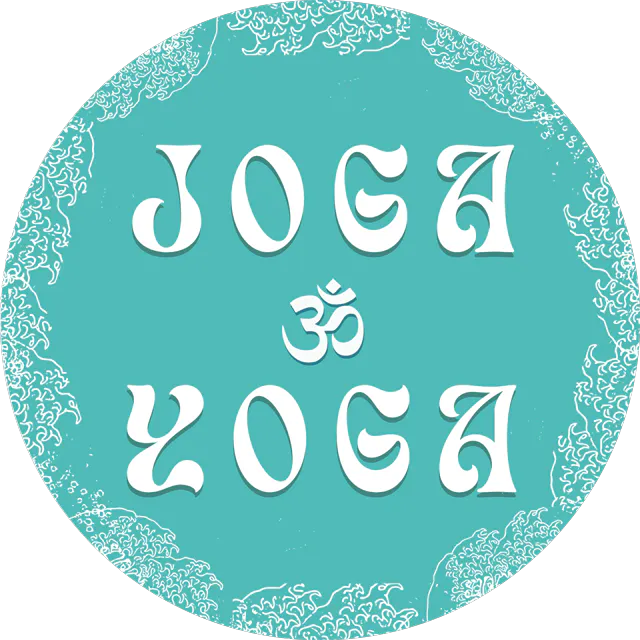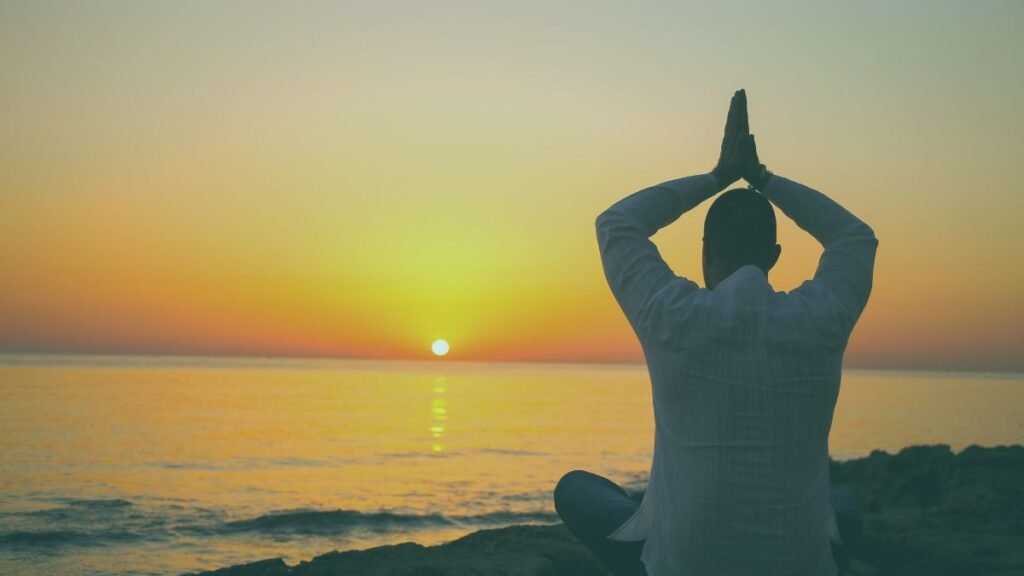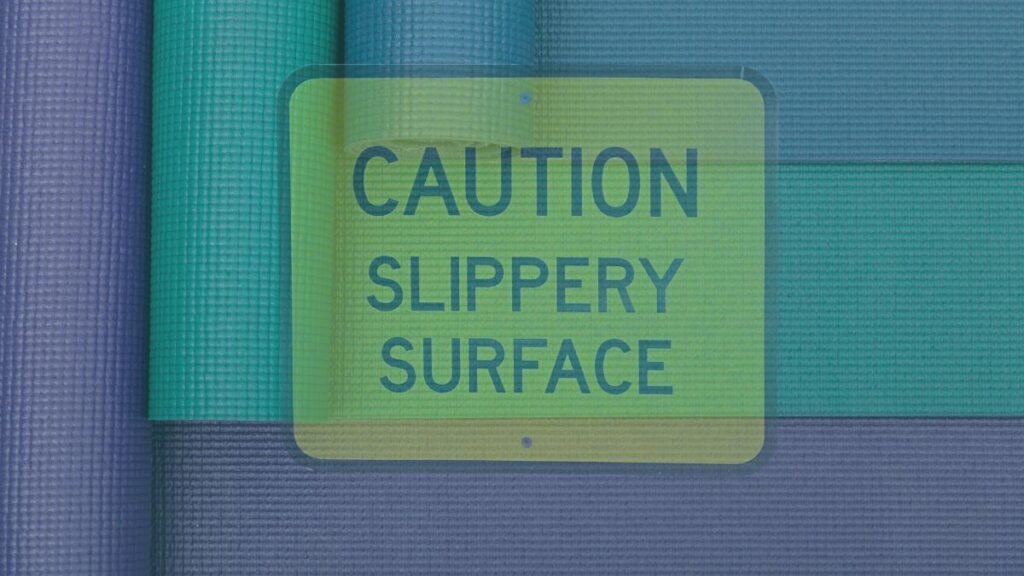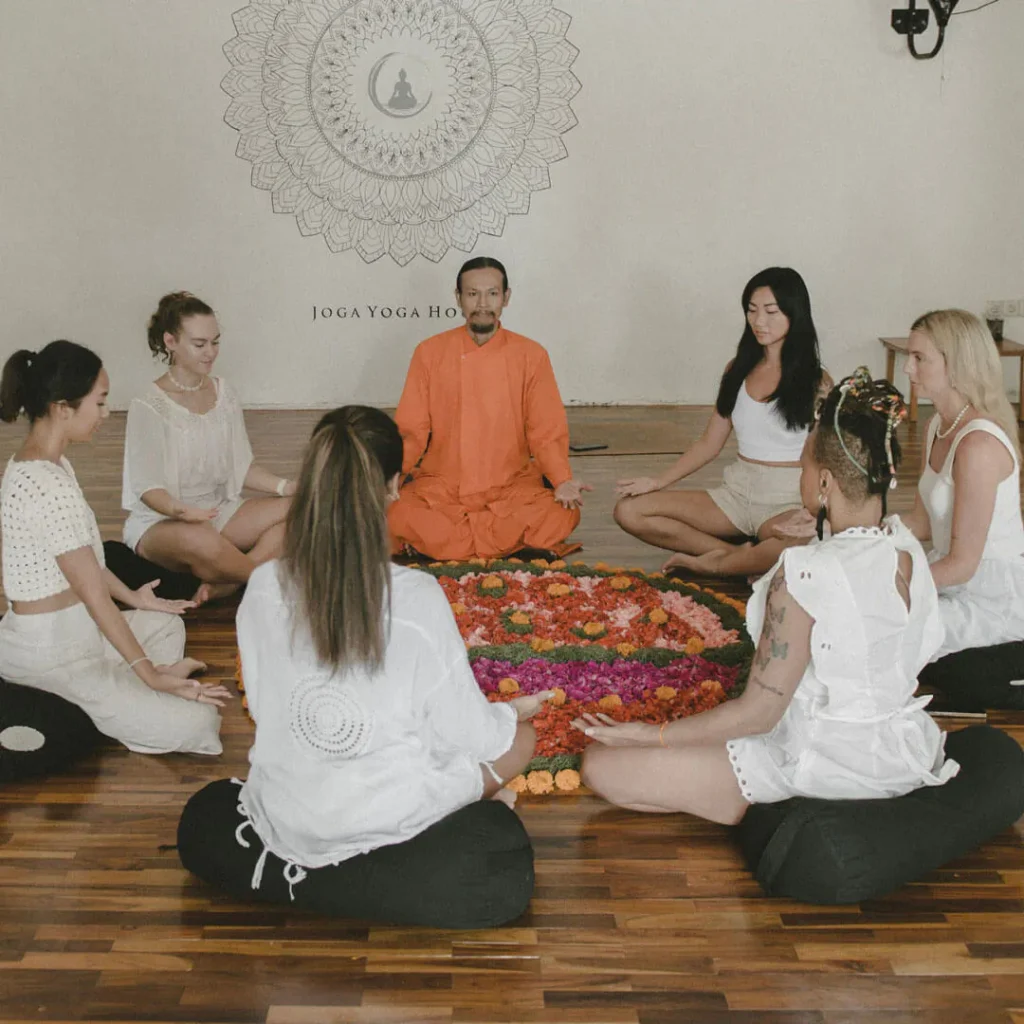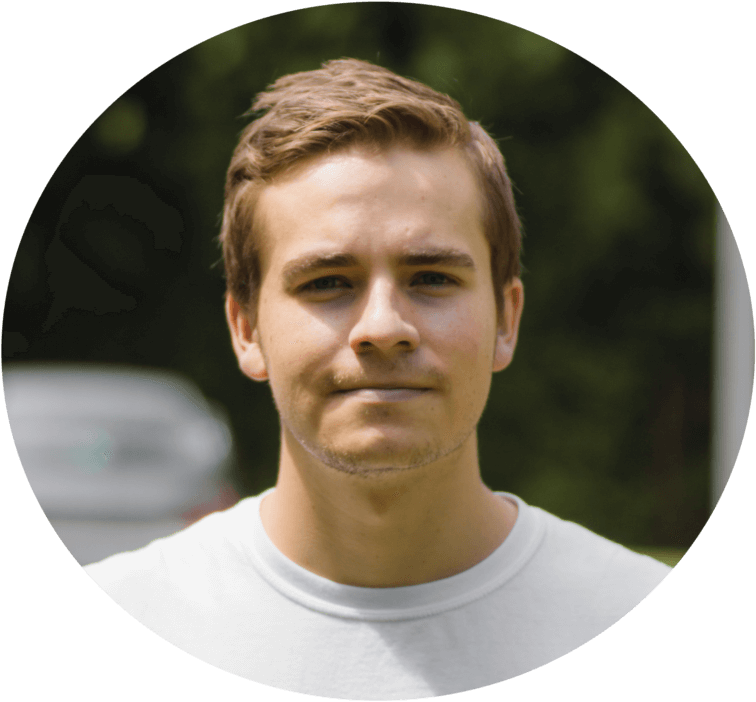Introduction: Why Compare Face Yoga and Yoga Teacher Training?
As more people search for natural ways to look and feel healthier, both face yoga and traditional yoga teacher training are gaining fans all over the world. But what’s the real difference between getting certified to teach face yoga versus taking a full yoga teacher training program?
This guide gives you a clear, easy-to-understand comparison of both options. You’ll find out:
- What face yoga and yoga teacher training each include
- How certification works for both
- What you’ll study
- Who each type of training is for
- The types of jobs and careers possible with each
- How much time and money you may need to invest
- Frequently asked questions to help you choose your path
If you’re thinking about a career in wellness, want to add new skills, or are just curious about your options, keep reading to see which path could be the best fit for you.
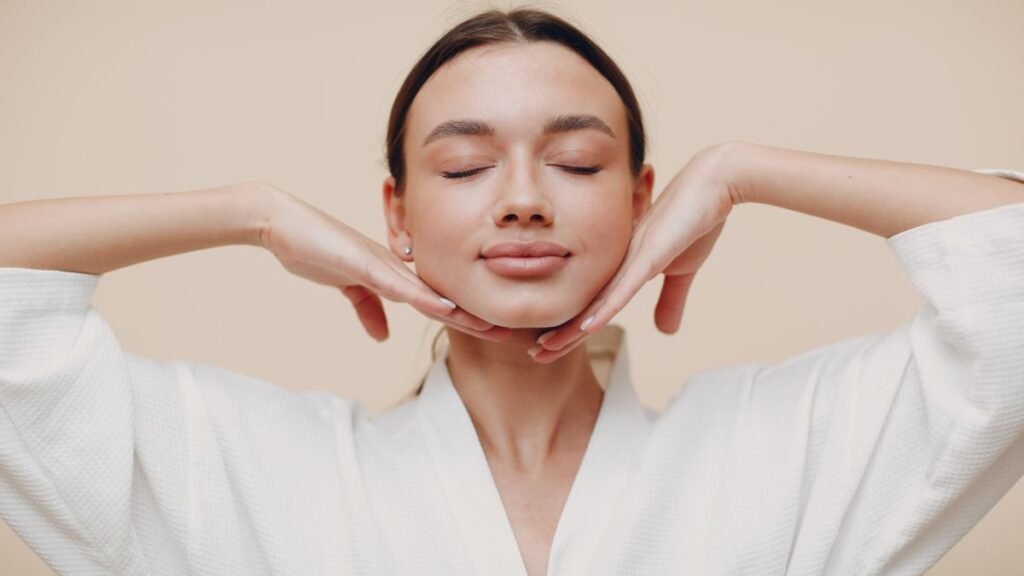
What Is Face Yoga?
Face yoga is a set of exercises, stretches, and massage techniques that focus on the muscles of the face, neck, and sometimes even the shoulders. The goal is to help the skin look healthier, reduce tension, and support natural beauty without surgery or chemicals.
The Main Parts of Face Yoga:
- Facial Exercises:
- Small movements to lift and strengthen muscles in the cheeks, forehead, around the mouth, and jawline.
- Small movements to lift and strengthen muscles in the cheeks, forehead, around the mouth, and jawline.
- Massage:
- Using the fingers or special tools to boost blood flow, help with lymphatic drainage, and make the skin glow.
- Using the fingers or special tools to boost blood flow, help with lymphatic drainage, and make the skin glow.
- Acupressure:
- Gently pressing certain points on the face to help with headaches, relaxation, or puffiness.
- Gently pressing certain points on the face to help with headaches, relaxation, or puffiness.
- Relaxation & Breathwork:
- Releasing tightness in the face and teaching calming breathing to help the mind and body relax.
- Releasing tightness in the face and teaching calming breathing to help the mind and body relax.
- Healthy Habits:
- Including tips for sleep, nutrition, stress relief, and positive thinking to help the whole self, not just the face.
- Including tips for sleep, nutrition, stress relief, and positive thinking to help the whole self, not just the face.
What Can Face Yoga Help With?
- Softer lines and fewer wrinkles
- Lifting cheeks and brows without surgery
- Better skin color and brightness
- Less puffiness around the eyes or jaw
- Improved mood and self-confidence
What Is Yoga Teacher Training?
Yoga teacher training (often called YTT) is a much bigger program. It covers the whole body, mind, and the history of yoga. The most common program is the 200-hour YTT, but there are also 300-hour and even 500-hour options for those who want to go deeper.
The Main Parts of Yoga Teacher Training:
- Asana (Yoga Poses):
- Learning safe movement and proper alignment for each posture.
- Learning safe movement and proper alignment for each posture.
- Pranayama (Breathwork):
- Techniques for calming, energizing, or balancing the body and mind.
- Techniques for calming, energizing, or balancing the body and mind.
- Meditation and Mindfulness:
- Training the mind to focus, relax, and reflect.
- Training the mind to focus, relax, and reflect.
- Yoga Philosophy:
- Understanding the roots of yoga, its history, and its deeper meanings (like the Yoga Sutras or Eight Limbs).
- Understanding the roots of yoga, its history, and its deeper meanings (like the Yoga Sutras or Eight Limbs).
- Anatomy and Physiology:
- Studying how the body works, especially for safe teaching and injury prevention.
- Studying how the body works, especially for safe teaching and injury prevention.
- Teaching Skills:
- How to plan and lead group classes or private lessons, cueing, sequencing, and offering adjustments.
- How to plan and lead group classes or private lessons, cueing, sequencing, and offering adjustments.
- Professional Practice:
- The ethics of being a yoga teacher, plus business and communication skills.
- The ethics of being a yoga teacher, plus business and communication skills.
What Can Yoga Teacher Training Help With?
- Deepening your personal practice and knowledge
- Gaining confidence to teach in studios, gyms, online, or privately
- Building a solid foundation for a yoga or wellness career
- Connecting with a worldwide yoga community
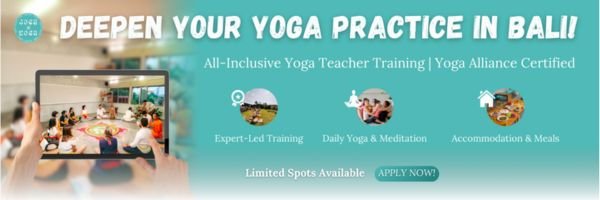
Course Formats & Study Styles
Face yoga certification and yoga teacher training are both available in different learning formats. Here’s how they compare:
| Feature | Face Yoga Certification | Yoga Teacher Training |
| Study Time | 20–60 hours | 200–500 hours |
| Format | Online, self-paced; live virtual; 1-on-1; some in-person | In-person (most common); hybrid; online |
| Assessment | Short written test; demo class; sometimes video assignment | Written test; live teaching demo; peer practice |
| Accreditation | Wellness bodies (IHPM, IICT, CPD, IAO) | Yoga Alliance (most recognized globally) |
| Pre-Requisites | Usually none | Usually none, but some yoga experience helps |
| Ongoing Support | Varies by provider | Alumni groups, mentoring, teaching networks |
Quick Tip:
Yoga teacher training is more time-consuming and requires a bigger commitment. Face yoga certification is faster and more specialized.
Curriculum Breakdown
Typical Face Yoga Certification Curriculum
- Introduction to Face Yoga
- How it works and who can benefit
- How it works and who can benefit
- Facial Anatomy & Physiology
- Understanding facial muscles, bones, and skin
- Understanding facial muscles, bones, and skin
- Exercise Routines
- Upper face (forehead, eyes, brows)
- Lower face (cheeks, mouth, jaw, neck)
- 5-minute routines for busy days
- Upper face (forehead, eyes, brows)
- Massage & Acupressure
- Hands-on techniques for self-massage
- Using tools like gua-sha
- Hands-on techniques for self-massage
- Breathwork and Energy
- Breath techniques for relaxation
- Understanding “Qi” or “Prana” (life force)
- Breath techniques for relaxation
- Teaching Methods
- Leading group or 1:1 sessions
- Modifying for different ages/needs
- Leading group or 1:1 sessions
- Business Basics
- How to set up classes, workshops, or online sessions
- Simple marketing and pricing tips
- How to set up classes, workshops, or online sessions
- Certification Assessment
- Quiz or written test
- Teaching a sample class (often on video)
- Quiz or written test
Typical Yoga Teacher Training Curriculum
- Yoga History & Philosophy
- The story of yoga, its main ideas, and ancient texts
- The story of yoga, its main ideas, and ancient texts
- Asana (Physical Postures)
- Detailed breakdown of main poses
- Variations and safety tips
- Detailed breakdown of main poses
- Pranayama (Breathing Practices)
- Different techniques and their uses
- Different techniques and their uses
- Meditation & Mindfulness
- Building focus, relaxation, and positive habits
- Building focus, relaxation, and positive habits
- Anatomy & Physiology
- How muscles and joints work in yoga
- Preventing injuries
- How muscles and joints work in yoga
- Teaching Practice
- Cueing, sequencing, hands-on assists
- Leading practice classes
- Cueing, sequencing, hands-on assists
- Special Populations
- Yoga for kids, seniors, prenatal, etc.
- Yoga for kids, seniors, prenatal, etc.
- Professional Ethics & Business
- Creating a safe, respectful yoga environment
- Business planning, insurance, and legal basics
- Creating a safe, respectful yoga environment
- Certification Assessment
- Final written exam
- Leading a live class (graded by trainers)
- Final written exam
Accreditation & Recognition
Face Yoga Certification
- Accredited by organizations like IHPM (International Practitioners of Holistic Medicine), IICT (International Institute for Complementary Therapists), or CPD (Continuing Professional Development).
- Gives you credibility to clients and may allow you to get insurance in your country.
- Not recognized by Yoga Alliance (so it won’t let you teach regular yoga classes).
Yoga Teacher Training
- Accredited by Yoga Alliance (the most recognized international yoga certifier).
- Lets you teach yoga anywhere in the world—studios, gyms, retreats, schools, and online.
- Required for many yoga teaching jobs or to open your own studio.
Why Accreditation Matters
- Yoga Alliance certification means your YTT meets strict standards and is accepted worldwide.
- Face yoga certificates show you’ve learned from a professional course, but recognition may depend on local rules or industry norms.
- Both are important for getting insurance and building client trust.
Who Should Enroll?
| If you are… | Face Yoga Certification | Yoga Teacher Training |
| A beauty or wellness therapist | ✔ Add face yoga to services | Optional (not the main focus) |
| A fitness or yoga instructor | ✔ Add short face routines | ✔ Grow into a yoga career |
| A health/wellness coach | ✔ Lead face yoga in sessions or workshops | ✔ Add full yoga classes, retreats |
| A career changer | ✔ Start with a small, focused offering | ✔ Begin a yoga teaching career |
| A personal growth seeker | ✔ Learn self-care for your face | ✔ Deepen practice and self-knowledge |
| Looking for fast training | ✔ Usually 1–2 months or less | ✘ Usually 2–6 months or more |
| Wanting a global yoga career | ✘ Not for full yoga teaching | ✔ Yoga Alliance is accepted everywhere |
Career Paths & Earning Potential
With Face Yoga Certification
- Lead face yoga classes in spas, wellness centers, gyms, or online
- Partner with beauty salons or holistic health clinics
- Offer private 1:1 sessions, workshops, or courses
- Create and sell face yoga programs, books, or skincare tools
- Typical income: $30–$100 per class/session; more for group workshops or online programs
With Yoga Teacher Training
- Teach yoga in studios, gyms, workplaces, or online
- Host yoga retreats or specialty workshops
- Offer private yoga lessons for individuals or small groups
- Build digital memberships, YouTube channels, or yoga apps
- Typical income: $20–$75 per class; $500–$2,000+ per retreat or event
Note: Income varies by location, reputation, and niche. Many instructors build multiple income streams over time.
Pros & Cons at a Glance
| Feature | Face Yoga Certification | Yoga Teacher Training |
| Training Time | Short (20–60 hours) | Long (200–500+ hours) |
| Cost | $300–$900 USD | $1,500–$4,000+ USD |
| Main Focus | Face muscles & self-care | Whole-body yoga, philosophy, teaching |
| Teaching License | Not for general yoga | Yoga Alliance recognized everywhere |
| Wellness Add-On | Great for beauty & holistic pros | Full yoga foundation |
| Career Path | Niche classes, spa, online | Yoga classes, retreats, studios |
Conclusion: Which Path Should You Choose?
Face Yoga Certification is best for those who want a quick, focused, and specialized skill for natural beauty, facial health, and holistic wellness. It’s a strong add-on for estheticians, coaches, and anyone in the beauty or spa world.
Yoga Teacher Training is best for those who want a complete foundation in yoga—body, breath, and mind. It’s ideal if you want to teach yoga professionally, start retreats, or make yoga a big part of your life and career.
Both are valuable in their own ways, and some professionals decide to complete both over time to expand their skills.

FAQ: Face Yoga vs. Yoga Teacher Training
Can I do both trainings?
Yes. Many yoga teachers later add face yoga for extra skills, and some face yoga teachers eventually take a yoga teacher training for a deeper foundation.
Do I need experience?
Most beginner courses only require interest and dedication. For YTT, some yoga experience is helpful but not always required.
Is face yoga recognized by Yoga Alliance?
No. Face yoga is a different field, usually certified by wellness groups, not Yoga Alliance.
How long does it take to get certified?
Face yoga: usually a few weeks to two months.
YTT: usually 2–6 months or longer.
Can I teach online?
Yes! Both certifications allow you to teach online or in person.
Which one makes more money?
Yoga teacher training opens up more and bigger career options, but face yoga can be a great niche with less competition and faster certification.
What if I want to work in a spa or beauty clinic?
Face yoga fits best, but having both certifications can make you stand out even more.
